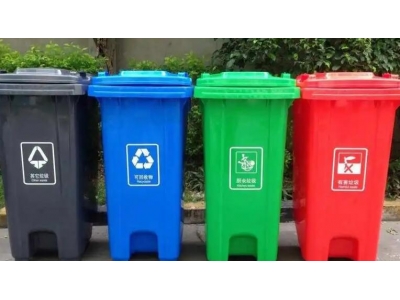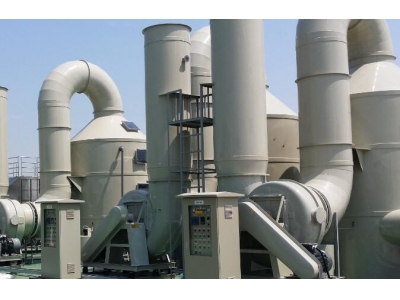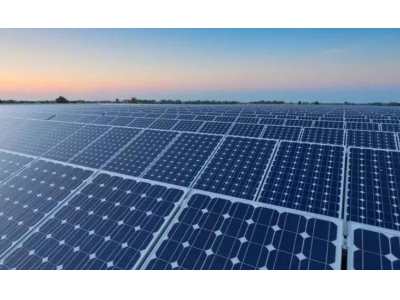一、小学垃圾分类作文英文翻译
垃圾分类是近年来备受关注的热门话题,无论在学校还是社区,都开始倡导垃圾分类的重要性。垃圾分类对环境保护具有重要意义,让我们的地球更洁净,让我们的未来更美好。
小学生是我们社会的未来和希望,教育他们垃圾分类的意义和方法至关重要。小学垃圾分类作文是一种很好的教育方式,可以引导学生对垃圾分类进行思考和关注。下文是《小学垃圾分类作文英文翻译》的内容。
My Views on Garbage Classification
As an elementary school student, I strongly believe that garbage classification is crucial for protecting our environment. It is our responsibility to make the Earth a cleaner and healthier place for future generations. Therefore, it is essential that we learn about garbage classification and its significance.
Firstly, garbage classification helps reduce waste and conserve resources. By separating garbage into different categories such as recyclables, kitchen waste, and hazardous waste, we can effectively recycle and reuse materials. This not only saves energy and reduces pollution but also minimizes the exploitation of natural resources.
Secondly, garbage classification contributes to the prevention of pollution. Improper disposal of waste can lead to environmental contamination, air and water pollution, which pose a threat to human health and other living organisms. By sorting our garbage and disposing of it correctly, we can prevent the release of harmful substances into the environment.
Thirdly, garbage classification promotes environmental awareness and responsibility. By learning about the impact of garbage on the environment, we become more conscious of our consumption habits. We start to make informed choices, such as using reusable items and reducing our overall waste production. Through these actions, we can actively participate in creating a sustainable future.
The Importance of Teaching Garbage Classification
Teaching garbage classification to elementary school students is of great importance for several reasons. Firstly, it instills good habits from an early age. By introducing the concept of garbage classification to young children, we are shaping their behavior and mindset towards waste management. When these habits are formed at a young age, they are likely to continue throughout their lives.
Secondly, teaching garbage classification promotes environmental education. Often, students are not aware of the consequences of their actions on the environment. By incorporating garbage classification into the curriculum, schools can raise awareness and teach students about the importance of protecting our planet. This knowledge empowers students to become responsible citizens who actively contribute to environmental preservation.
Furthermore, teaching garbage classification encourages critical thinking and problem-solving skills. When students learn about the different categories of waste and how to separate them, they are required to think analytically and categorize items based on their characteristics. This cultivates their ability to reason, make informed decisions, and solve complex problems.
To effectively teach garbage classification to elementary school students, teachers should adopt interactive and engaging teaching methods. These may include field trips to recycling centers, hands-on activities, and group discussions. By making the learning process enjoyable and interactive, students are more likely to retain the information and apply it in their daily lives.
Conclusion
In conclusion, garbage classification is not only important but also necessary for the well-being of our planet. It helps conserve resources, prevent pollution, and foster environmental awareness and responsibility. Teaching garbage classification to elementary school students is crucial as it lays the foundation for a sustainable future. By educating our young generation about garbage classification, we are nurturing individuals who understand the significance of waste management and actively contribute to a cleaner and greener environment.
This blog post is a detailed explanation of the importance of garbage classification. It highlights the significance of teaching this concept to elementary school students and provides reasons for why it should be integrated into their education. The post concludes by emphasizing the positive impact garbage classification can have on our environment and the role it plays in shaping a sustainable future.二、垃圾分类最详细的垃圾分类指导?
垃圾分为四大类:可回收垃圾、厨余垃圾、有害垃圾、其他垃圾。
可回收垃圾包括:纸类、塑料、玻璃、衣物、金属。
厨余垃圾包括:剩饭剩菜、瓜皮果核、动物内脏、过期食品等易腐烂易粉碎食品垃圾。
有害垃圾包括:电池、废日光灯管、废水银温度计、过期药品、废油漆及容器、杀虫剂等。
其他垃圾包括:渣土、卫生纸、烟头等。
三、什么是垃圾分类垃圾分类?
垃圾分类一般是指按一定规定或标准将垃圾分类储存、分类投放和分类搬运,从而转变成公共资源的一系列活动的总称。分类的目的是提高垃圾的资源价值和经济价值,力争物尽其用。
四、垃圾分类的分类方法?
生活垃圾是按照可回收物垃圾、有害垃圾、湿垃圾以及干垃圾的标准分成四大类,可回收垃圾是指废弃电子产品、废纸张、废塑料以及废金属等,有害垃圾则包括废电池、废药品、汞以及农药类,干垃圾包括食材废料、剩菜剩饭之类,干垃圾则是除这三类之外的生活垃圾。
垃圾分类的定义
垃圾分类是指按照一定规定或标准将垃圾分类储存、分类投放和分类搬运,进而转化为公共资源一些列活动的总称,垃圾分类的目的是为了提高垃圾的经济价值和资源价值。
垃圾分类的标准
生活垃圾是按照可回收物垃圾、有害垃圾、湿垃圾以及干垃圾标准分成四大类,可回收物收集容器为蓝色,有害垃圾收集容器为红色,湿垃圾收集容器为棕色,干垃圾收集容器为黑色。
垃圾具体分类
1、可回收垃圾
可回收垃圾是指未经污染、可回收再利用的生活废弃物,包括废弃电子产品、废纸张、废塑料、废玻璃以及废金属等,对于立体的包装物需将内物清空后再进行投放,碎玻璃需包裹后再进行投放。
2、有害垃圾
有害垃圾是指对于人体健康以及自然环境造成直接或是潜在危害的物质,包括废电池、废药品、废灯管、废油漆、汞以及农药类,废药物投放时需带有包装一起投放。
3、湿垃圾
湿垃圾包括食材废料、剩菜剩饭、瓜皮果核、过期食品、花卉绿植以及中药药渣等易腐垃圾,湿垃圾在进行投放时需将包装物去除投放可回收垃圾或是干垃圾中。
4、干垃圾
干垃圾是指除可回收垃圾、有害垃圾、湿垃圾以外的垃圾,具体包括纺织类、木竹类、灰土类、砖瓦陶瓷类,对于带有尖状物品需包裹之后进行投放。
垃圾分类给人类带来的好处
垃圾分类可减少占地,对于不易降解的垃圾经过处理减少对于土地的侵蚀,垃圾循环利用可减少环境污染, 变废为宝可起到环保作用的同时又能节省资源。
五、垃圾分类是按照垃圾的什么分类的?
垃圾分类是按照有害垃圾,可回收垃圾,干垃圾,湿垃圾分类的
六、垃圾袋如何分类垃圾分类?
垃圾可分生活垃圾和可回收垃圾和有害垃圾
七、垃圾分类生活垃圾分类什么系统?
生活拉圾分,可回收垃圾和不可回收垃圾
八、垃圾分类怎么分类?
大连市自2019年5月1日起,正式实施城市生活垃圾分类。 分类标准如下: 可回收物:就是垃圾中适宜回收和资源化利用的垃圾。主要包括未被污染的废纸、废金属、废玻璃、废塑料、织物和瓶罐等。 易腐垃圾:就是容易腐烂变质的有机物垃圾。包括相关单位食堂、宾馆、饭店等产生的餐厨垃圾,农贸市场、农产品批发市场产生的蔬菜瓜果垃圾、腐肉、肉碎骨、蛋壳、畜禽产品内脏,居民家中产生的菜梗菜叶、剩饭剩菜、残枝落叶等。 有害垃圾:就是对人体健康和自然环境造成直接或潜在危害的废弃物。主要包括废电池、油漆、灯管、水银温度计、过期药品等。 其他垃圾:去除可回收垃圾、有害垃圾、大件垃圾、装修垃圾以外剩余的垃圾统称为其他垃圾
九、垃圾分类垃圾桶颜色分类顺序?
垃圾分类垃圾桶颜色分别是绿,蓝,红,灰:。
十、垃圾分类的标语?
垃圾分类,守护家园。
环境关系你我他,垃圾分类靠大家。
积极参与垃圾分类,创优美社区环境。





